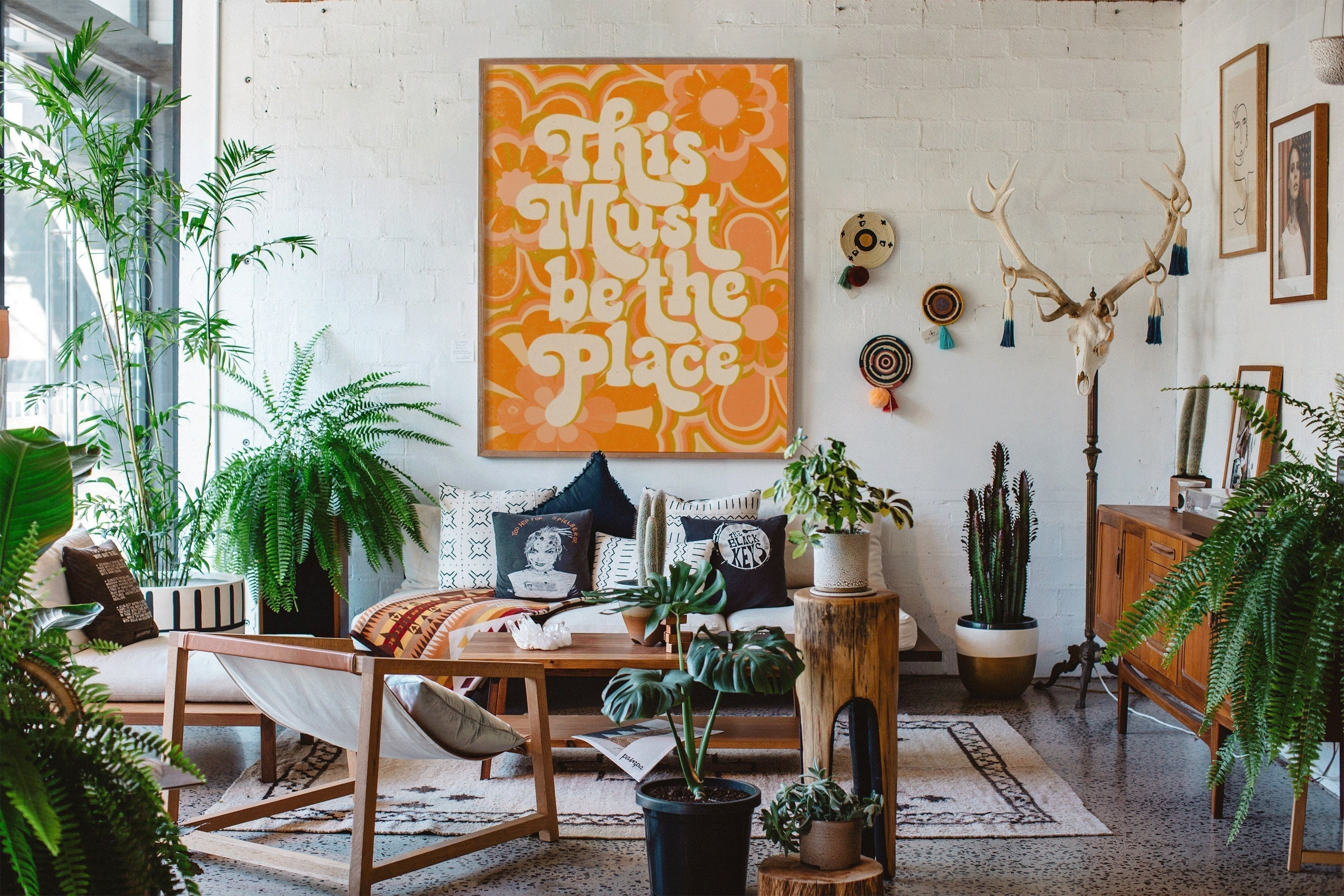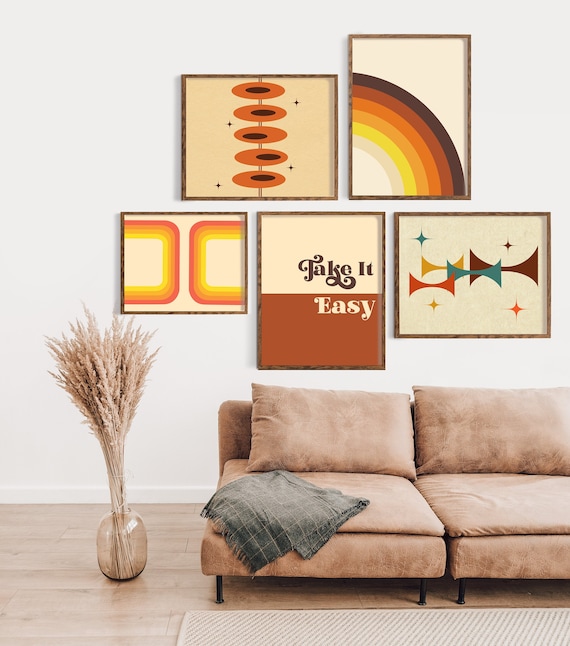The 1970s was more than just a decade; it was a cultural phenomenon that influenced fashion, music, and, notably, interior design. As someone who grew up surrounded by the lively energy of the ’70s, I have vivid memories of the colors, patterns, and textures that filled homes during that period. Whether you lived through the era or are just discovering its charm, this article will take you on a journey through the iconic wall decor trends of the 1970s, offering insights, tips, and personal anecdotes to help you infuse a bit of nostalgia into your own space.
The Evolution of Wall Decor in the 1970s
To understand 1970s wall decor, it’s essential to recognize how the trends evolved throughout the decade. The ’70s were marked by a reaction against the minimalism of the previous decade, moving towards an explosion of color and texture.
Key Factors Influencing Decor Trends
- Cultural Movements: The rise of feminism, environmentalism, and a counter-culture significantly influenced design aesthetics.
- Technological Advances: New materials and production methods allowed for bold designs and textures.
- Global Inspirations: Influences from different cultures, especially from Asia and Africa, became mainstream.
Signature Styles of 1970s Wall Decor

1. Bold Colors and Patterns
The ’70s epitomized a love for vibrant colors. Earth tones, pastels, and primary colors coexisted, often in bold patterns.
Popular Color Palettes
| Colors | Description |
|---|---|
| Avocado Green | A staple in kitchens, this rich green offered a natural vibe. |
| Mustard Yellow | Used in various accents, it added warmth and brightness. |
| Burnt Orange | This color became synonymous with the 1970s aesthetic. |

2. Textured Wall Coverings
From wood paneling to fabric wall hangings, texture was a crucial aspect of 1970s decor. Many homes featured:
- Wood Paneling: Often found in dens and living rooms, creating a rustic yet cozy environment.
- Woven Textiles: Wall hangings made from macrame or fabric added softness to spaces.
3. Artwork and Framed Pieces
The art of the 1970s was eclectic, with influences ranging from surrealism to pop art. Some notable elements included:
- Large Canvas Prints: Featuring abstract art and bold colors.
- Framed Posters: From music icons to film stars, these were common.

Creating Your Own 1970s-Inspired Wall Decor
Bringing a touch of the 1970s into your home can be both rewarding and nostalgic. Here are some practical tips based on personal experience.
Tips for Choosing Colors
- Start with earth tones as a base and mix in bright accent colors.
- Experiment with combinations like avocado green and burnt orange for a true retro feel.

Incorporating Textures
Adding layers of texture can create depth in your decor.
- Consider using fabric wall hangings or textured wallpapers.
- Wood paneling can be a striking feature wall in any room.
Accessorizing with Art and Frames
Your art selection will profoundly impact your decor style. Here’s how to curate the perfect collection:
- Look for oversized prints or posters from the era.
- Visit local thrift stores for unique finds that can add personality.

Pros and Cons of 1970s Wall Decor
Pros
- Nostalgic Charm: Instantly evokes memories for those who remember the era.
- Vibrant Aesthetics: Bright colors can enliven a space.
- Unique Style: Stand out with a distinctive look that isn’t overly common today.

Cons
- Overbearing Colors: If not balanced well, bold colors can overwhelm a room.
- Limited Market: Authentic ’70s decor might be harder to find.
- Maintenance: Some materials, like wood paneling, may require upkeep.
FAQs About 1970s Wall Decor
What materials were popular in 1970s wall decor?
Common materials included wood, fabric, and innovative synthetics, which offered bold designs and rich textures.
How can I incorporate 1970s wall decor in a modern home?
Mix retro elements with contemporary furniture and decor for a balanced look. Choose one or two retro accent pieces to avoid overwhelming the space.
Are there any DIY ideas for creating 1970s-inspired wall art?
Absolutely! You can create macrame wall hangings, paint abstract shapes, or frame vintage fabric for unique and personal decor pieces.
Conclusion: Embracing Retro Vibes
The 1970s was a decade marked by bold choices, and its wall decor trends continue to inspire interior design today. Whether you decide to fully commit to a retro aesthetic or simply add a few nods to the past, remember that the goal is to create a space that feels uniquely yours. Embrace the colors, textures, and eclectic art that defined an era and transform your home into a vibrant reflection of the past.
Thank you for joining me on this nostalgic journey! Here’s to creating spaces filled with character, comfort, and a bit of groovy flair.